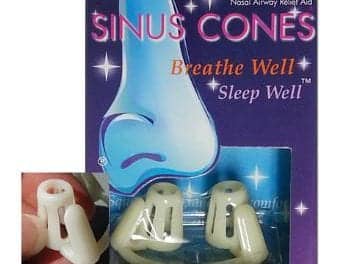Michael Thorpy, MD, discussed current and emergent treatment options available for the sleep disorder in a symposium during the SLEEP 2016 meeting.
Overall goals of narcolepsy treatment include improving the safety of the patient as well as managing symptoms. “The goals of treatment are to get under control the excessive daytime sleepiness, which is usually the main symptom in all patients with narcolepsy. There are other symptoms that patients with narcolepsy have that may need to be controlled as well,” Michael Thorpy, MD, professor of clinical neurology at Albert Einstein College of Medicine in New York, explains in an e-mail interview with Sleep Review. Thorpy presented on the subject at the “Best Practices for Managing Narcolepsy and Obstructive Sleep Apnea: Evidence-Based Strategies and Solutions” symposium on June 13 in Denver, Colo. “Treating narcolepsy is more than just treating excessive sleepiness and cataplexy, but requires management of all the ancillary symptoms of narcolepsy.”
As such, treatment goals may include reducing daytime sleepiness, cataplexy, sleep paralysis, nightmares and hallucinations, and disturbed nocturnal sleep. Thorpy notes that treatment should also enable a patient to function better in life (such as perform better in school, on the job, and socially), as well as improve the safety of the patient and the general public. “Patients with narcolepsy can fall or have sudden sleep episodes that may put them at risk of either a motor vehicle accident or an accident even around the house…particularly if they’re working with any dangerous equipment. Improving not only their symptoms [and] quality of life but also preventing any risk to the patient or to others because of the sleepiness [should be a goal of treatment].”
Current Treatments
During the symposium, Thorpy detailed the specific mechanisms of different alerting agents. These include: caffeine, with the mechanism of adenosine receptor antagonist; modafinil, for which the mechanism is not clear, but appears to be predominately by dopamine; histamine receptor 3 inverse agonists (H3R); hypocretin agonists; and sympathomimetic, which is designed to enhance neurotransmission of dopamine, serotonin, and norepinephrine.
“There are two main types of drugs that one would consider; the drugs that improve alertness and wakefulness during the daytime and those that suppress cataplexy. Then there are other medications that can be used to treat additional narcolepsy symptoms or in order to improve the quality of sleep,” Thorpy says.
There are two important precautions for patients who use modafinil and armodafinil, Thorpy notes: they can reduce oral contraceptives efficacy (they increase the metabolism of ethinylestradiol) and can cause serious rashes and allergic reactions. Of the traditional stimulants, Adderall, a dopamine and norepinephrine-releasing agent, is an additional medication available for managing narcolepsy symptoms. Available in two formulations—instant release (IR) and extended release (XR)—only the IR is indicated for narcolepsy, Thorpy says.
According to Thorpy, sodium oxybate is the only medication that can treat all symptoms of narcolepsy and can improve overall cognitive functioning. This medication has a number of benefits, including reducing vivid dreams, nightmares, and hallucinations; improving nocturnal sleep; and reducing sleep paralysis. “I think that the sodium oxybate is the most appropriate agent for patients who have the diagnosis of narcolepsy because it’s the only drug that treats all the symptoms of narcolepsy. It’s a very effective medication at treating all those symptoms,” he says.
But there are certain precautions for healthcare professionals and users to be aware of with sodium oxybate (although Thorpy says it is well tolerated among most patients). It can cause nausea and headaches. It should not be used with hypnotics, alcohol, or depressant medications. Also, because it has the potential to cause respiratory depression, it should not be prescribed to patients with untreated obstructive sleep apnea. In addition, caution should be exercised with patients who may be depressed, and Thorpy recommends healthcare professionals ask patients about suicidal ideation or previous attempts.
Overall, sodium oxybate is an effective first-line drug for the treatment of narcolepsy for patients with narcolepsy type 1 and 2, and an effectual second-line of treatment should include modafinil or armodafinil for sleepiness and venlafaxine or atomoxetine for cataplexy. Thorpy says the combination of sodium oxybate and modafinil produces the most effective treatment of excessive sleepiness.
“All medications have potential side effects and it’s a matter of weighing out in a particular patient what would be the appropriate medication and the balance between the effectiveness and potential for side effects,” Thorpy says.
On the Horizon
Thorpy also addressed emerging treatments for narcolepsy, which he categorized in two ways: non-hypocretin-based therapies and hypocretin-based therapies. Non-hypocretin-based therapies include monoaminergic reuptake inhibitors, histamiergic H3 antagonist/inverse agonists, monoaminergic stimulating agents, and TRH analogues. Hypocretin-based therapies include peptide agonists, gene therapy, hypocretin cell transplantation, and nonpeptide agonists.
Future narcolepsy treatments may target hypocretin and histaminergic systems, Thorpy says. “Further down the line, we would hope that medications that affect the hypocretin system, which is reduced in patients with narcolepsy, may become available and could be very useful, [although it is] likely to be many years,” he says.
Also, a new wakefulness-promoting drug is under development by Jazz Pharmaceuticals. Thorpy says, “JZP-110…is currently under investigation, and initial reports that have been published indicate that this has a beneficial affect on alertness. It looks as though this medication is going to be a very useful alternative to the wake-promoting medications that we have at the moment.”
In addition to gaining a better perspective on new treatment directions in narcolepsy, Thorpy hopes that attendees of the presentation found the information regarding the use of sodium oxybate to be the most helpful for their clinical practice. “I think one of the biggest changes has really been the use of sodium oxybate, which for some physicians is relatively new. Sodium oxybate is a medication that we didn’t have a lot of experience with a few years back, but over the years…we’ve come to understand and know how to use this medication and we’ve seen its effectiveness.”
The symposium was sponsored by Vox Media and supported by an independent educational grant from Jazz Pharmaceuticals.
Cassandra Perez is associate editor for Sleep Review. CONTACT [email protected]






Until now modafinil has not shown any real big side effects, but there is no substitute for caffeine
I am very interested in joining a clinical trial for this drug if there are any openings for enrollment. Me: 60 yo FM RN, disabled after 33 tough years as a bedside nurse. Hx of Crohn’s, immune therapy, 2 head injuries, then MRSA after a breast surgery. Developed Narco after DX’d with Lyme 8 years ago.. Nothing seems to work. Pretty bad quality of life. Please email me or call if I have a shot at this trial.
Thank you,
Kathryn Ellison, RN
310-977-7706
[email protected]
Kathryn,
I too was diagnosed with Narcolepsy after having Lyme’s for many years. I always felt like the Lyme’s triggered everything else. Would love to exchange more info
I am so sorry that I “lost you”. That has been my mind on Lyme. Forgetfulness, I change topics frequently, try new protocols and end up at square 1. Slight improvement with Lyme but not taking anything for that. These biological are for the birds. Just read on Wednesday Thad these drugs like Remicaide Humira are not the wonder drugs they have been reported to be. I was talked in to trying 1 dose of Stellara and within 1 week had a raging sinusitis that grew out Serratia Marcescens. After 3 months of oral CIPRO and Zithromax, that seemed to fix it but No. my ENT chiseled away for 30 minutes in the office fungal rocks No cultures taken. Months earlier to this I showed the docs a photo of a 1”by 2” solid cylinder of rock hard contents of what might be 10 years of accumulated fungus. I have been begging for IV anti-fungals and now a MRI will check to see if I do have invasive mold disease. I am mentioning this because there always seems to be a new twist in this Lyme merry go round. Back on Adderal. Do I sleep, yes but as Dr. Klinghardt in Washington states, pharmaceutical sleep Is fake sleep. If you are up to it, let me know if there was progress made with your sleep or any other addition to what you are doing. Have you heard of fecal transplants? A friend is doing that and is improving slowly but surely. Was told that there is a you-tube video that walks you through it and is very safe. ‘‘This info provided by a high-profile MD from a high profile teaching hospital. Kathryn
Did you find anything else about fecal transplants for Narcolepsy? Are they doable for people with it? Did you have it done?
Hi, did you look further into fecal transplant for people with Narcolepsy? Is it doable for someone with it like me?
I have suffered for 10 years. I finally had a neurologist diagnose me with narcolepsy. I have been treated with adderall in multiple times and doses. I also take cymbalta at night to sleep. I still experience excessive day time sleepiness but also night time insomnia. It seems to trigger my misophonia to the extent that I must leave the area immediately or start yelling. I avoid eating with others because of this. I am hoping a new treatment could help me to better manage my symptoms. Please advive.
Megan,
I forgot to cite the article on biologicals. Wednesday , June 12,2019 front page. 38,000 people have died since 2004 taking these drugs.Prednisone worked for me but “it’s too dangerous “ A wonderful GI who treated me for Crohn’s had me on Cipro and 10 mgm of Prednisone for 10 years, which is about what your adrenals put out on a daily basis. Those were the 10 best years healthwise of my life. Kathryn
Being 88 years of age now been through some terrible times –in school –working–and social life–. medication that i take now Timed Released Ritalin 20mg after about 5 hours Modafinil 100mg—-plus i believe intaking DHEA and staying away from wheat and sugar—high calorie foods.The accident which started my narcolepsy age of 61/2 and resulted in a severe brain injury i feel quite grateful the way things worked out–i do not socialize much the Computer is my best friend !
Help my daughter soon 24 years. Everything began when she was 15. She returned from school said that she fell down when she laughed, then the nightmares of the hallucination began, she also heard music and many troubles. Now it has adapted, but we do not have doctors who treat narcolepsy. The daughter with great difficulty finished her studies. We live in Kyrgyzstan. Help us very much.Sincerely, Kaldan
I’m 39, was diagnosed with narcolepsy at 29. I had symptoms in my teenage yrs but was called lazy. I’ve been on Ritalin, caused HBP, switched to Provigil, gave me headaches, switched to dexedrine, quit manufacturing, switched to Adderall. My Dr is basically refusing to increase my dosage anymore regardless of tolerance that occurs. I’m also on sodium oxybate for sleep paralysis. Desoxyn has shown great results in study I read about. I wish something else was available to help with EDS. How it’s not considered a disability is absurd cuz it’s debilitating even when managed to a degree.